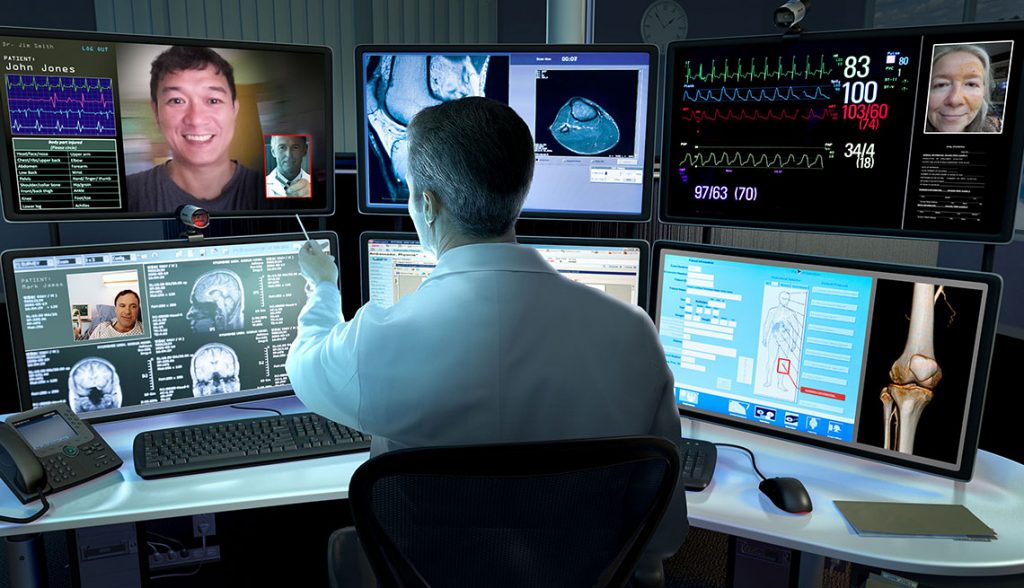
Distance and travel time between patients and care providers can limit access to better healthcare. Fortunately, with technological advancements like telemedicine and telehealth, one can overcome geographic barriers to healthcare services, especially for specialized health care providers.
Just like online-counseling, telemedicine can be particularly beneficial for patients in medically under-served communities and those in rural geographical locations where better healthcare services are limited.
But before I explain more on the benefits of telehealth and telemedicine and why the two are key in improving health service delivery, let us first learn the deference between Telehealth and telemedicine.
Telehealth: The term telehealth includes a broad range of technologies and services to provide patient care and improve the healthcare delivery system as a whole. Telehealth is different from telemedicine because it refers to a broader scope of remote healthcare services than telemedicine.
While telemedicine refers specifically to remote clinical services, telehealth can refer to remote non-clinical services, such as providing training, administrative meetings, and continuing medical education, in addition to clinical services. According to the World Health Organization (WHO), telehealth includes, “Surveillance, health promotion and public health functions.”
Telehealth is a subset of E-Health, which includes the delivery of health information, for health professionals and health consumers, education and training of health workers and health systems management through the internet and telecommunications.
Telemedicine: Telemedicine is a subset of telehealth that refers solely to the provision of health care services and education over a distance, through the use of telecommunications technology. Telemedicine involves the use of electronic communications and software to provide clinical services to patients without an in-person visit.
Telemedicine technology is frequently used for follow-up visits, management of chronic conditions, medication management, specialist consultation and a host of other clinical services that can be provided remotely via secure video and audio connections.
Just to throw another term into the mix, we should note that the WHO also uses the term “telematics.” According to them, “Telematics for health is a composite term for both telemedicine and telehealth, or any health-related activities carried out over distance by means of information communication technologies.”
The video below shows a sample of the usage of the technology.
After understanding the difference between telehealth and telemedicine, let us now look at how the two can benefit both health workers and patients in improving healthcare services.
Time saving: Telehealth has been shown to overcome barriers to health services caused by distance between the patients and health workers, access to reliable transportation, fragmentation of care due to gaps in time between appointments, and lack of available better health service providers.
For people with tight work schedules, video visits largely remove the need to take time off. You can simply schedule your visit during a break, or before or after work. You can be anywhere that offers sufficient privacy. You can comply with your doctor’s follow-up instructions and maintain your health without missing a day of work or wasting your precious paid time off.
READ MORE at BetterHelp.com
Telemedicine enhances traditional face-to-face medicine: A strong doctor-patient relationship is the foundation for high-quality patient care and reducing health care costs. Telemedicine should support, not replace, traditional care delivery. With telemedicine care providers can continue to care for patients in-person care while still providing the flexibility and convenience of seeing patients remotely for follow up visits, check-ups, and education when appropriate or necessary.

Less chance of catching a new illness: Where can you be sure to find a lot of sick people? At the doctor’s office of course. While everyone does their best to prevent one patient from catching something from another, it is always possible, especially in crowded waiting rooms. By staying home, you get the care you need while avoiding the risk of exposure and the chance that you’ll pass your illness on to someone else.
Telemedicine improves patient engagement and satisfaction: Telemedicine makes it easier and more convenient for patients to stay healthy and engaged in their health care. Patients love the convenience, flexibility and real-time care with their providers.
Besides telehealth and telemedicine, some times a patient may require a counselor and the good news is that online-counseling services can also be accessed with ease at BetterHelp
Eliminate child or elder care issues: Many of us have the responsibility for caring for children or older adults. Finding alternative care so that you can see the doctor can be difficult and expensive. Bringing them along can be stressful or impractical. Fortunately, telemedicine solves this challenge by allowing you to see your doctor while upholding your family responsibilities.
Cost Efficiencies – Reducing or containing the cost of healthcare is one of the most important reasons for funding and adopting telehealth technologies. Telemedicine has been shown to reduce the cost of healthcare and increase efficiency through better management of chronic diseases, shared health professional staffing, reduced travel times, and fewer or shorter hospital stays.
